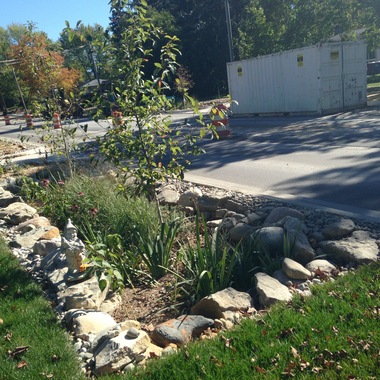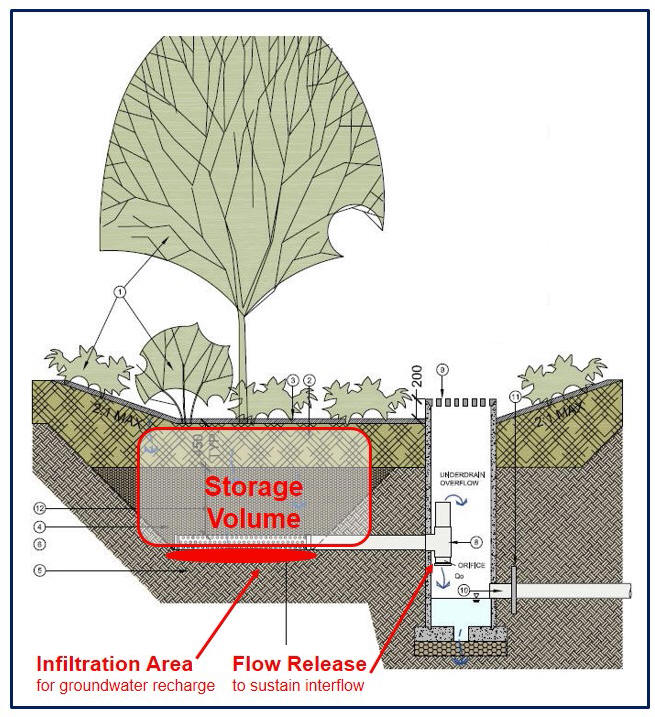Leading Change in Michigan, USA: City of Ann Arbor Adopts ‘Green Streets’ Policy
‘Green Streets’ Policy Keyed to Rainwater Capture
The city of Ann Arbor, Michigan has adopted an official “green streets” policy. This essentially means that every time a city street is constructed or reconstructed, improved rainwater management will be a top priority.
 “The green streets policy statement is a really exciting thing to happen for the city of Ann Arbor,” states Jennifer Lawson, the City’s water quality manager. “We’re one of the first municipalities in the state of Michigan to take a stand to ensure that not only our private developers are following stormwater rules and improving water quality, but we’re looking within our own walls.”
“The green streets policy statement is a really exciting thing to happen for the city of Ann Arbor,” states Jennifer Lawson, the City’s water quality manager. “We’re one of the first municipalities in the state of Michigan to take a stand to ensure that not only our private developers are following stormwater rules and improving water quality, but we’re looking within our own walls.”
Allowing for onsite infiltration of at least the first inch of rainfall will be the new baseline standard for design of new and reconstructed city streets. “This is more looking for a base level of infiltration, so that first one inch of rainfall, and then what else can we do on top of that to improve water quality,” adds Jennifer Lawson.
To Learn More:
To read the complete story written by Ryan Stanton and published by mlive.com, click on Ann Arbor adopts ‘green streets’ policy to address stormwater runoff, pollution; and to download a PDF copy, click here.

Rain garden retrofit in conjunction with road reconstruction (Photo credit: Ryan Stanton, The Ann Arbor News)
The View from British Columbia
“In British Columbia, our goal is to mimic the natural water balance and protect water quality. When we achieve the first, the latter will follow,” states Jim Dumont, the Engineering Applications Authority for the Partnership for Water Sustainability in  British Columbia.
British Columbia.
“Surface runoff is a small component of natural watershed function. The key to replicating watershed function and mitigating impacts is understanding ALL flow paths through the landscape. Then, Watershed-based Targets can be distilled into a set of design values that are easily applied at a lot and street level.”
“Protection of watershed and stream health ultimately involves maintaining the natural proportion of rainwater entering streams via three pathways: surface flow, interflow (shallow sub-surface flow), and groundwater flow. Performance targets define how to ‘slow, sink and spread’ rainwater and thereby replicate natural processes.”
Water Balance Methodology for Protecting Watershed Health
“For the past 15 years in British Columbia, we have been building on a science-based foundation as we have evolved the Water Balance Methodology so that we can quantify and integrate three performance targets, namely: storage volume, infiltration area and flow release rate,” continues Jim Dumont.
“The Water Balance Methodology provides a logical and straightforward way to assess potential impacts resulting from urban development; and analytically demonstrate the effectiveness of the methods proposed for preventing and/or mitigating those impacts.”
Comparison with Prescriptive Approaches
“The Water Balance Methodology provides a much greater degree of certainty than a prescriptive approach which only calls for capture of rainwater,” emphasizes Jim Dumont.
“Defining how much water can be retained, infiltrated, and detained on a lot or on a street is a completely different way of looking at the drainage problem and solutions,” concludes Jim Dumont.
To Learn More:
Click on Primer on Water Balance Methodology for Protecting Watershed Health. The Primer storyline is structured in five parts:
- Part A: Watershed-Based Approach to Rainwater Management
- Part B: Water Balance Methodology Explained
- Part C: Science Behind the Methodology
- Part D: How to Establish Targets
- Part E: References
Landscape-based solutions would allow each property in a neighbourhood to capture, store and slowly release the right proportion of rainwater into the ground to replenish aquifers and streams. Illustrated below is a rain garden, which is a typical application.

How Performance Targets for Storage, Infiltration and Flow Release are incorporated in a Rain Garden Design (image source: “Stormwater Source Control Design Guidelines 2012 (Final Report), Metro Vancouver, British Columbia)


